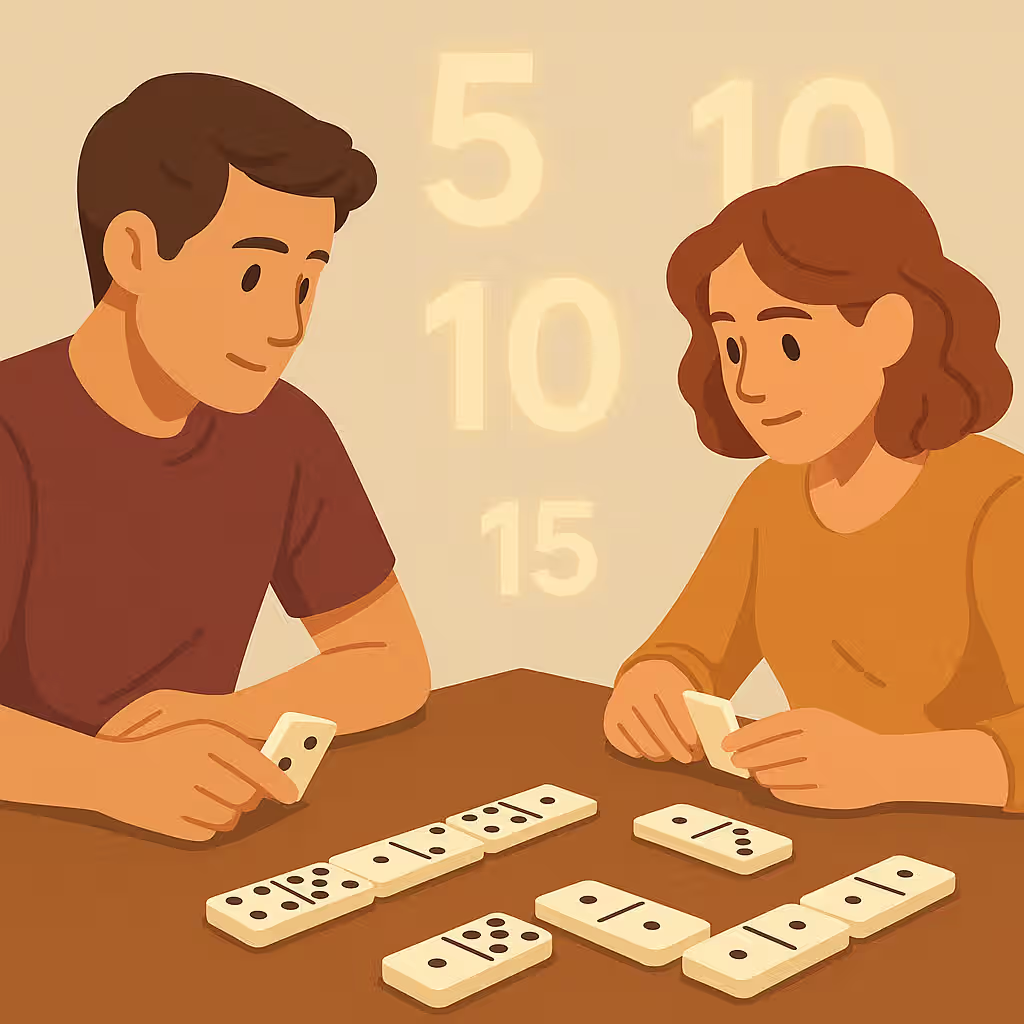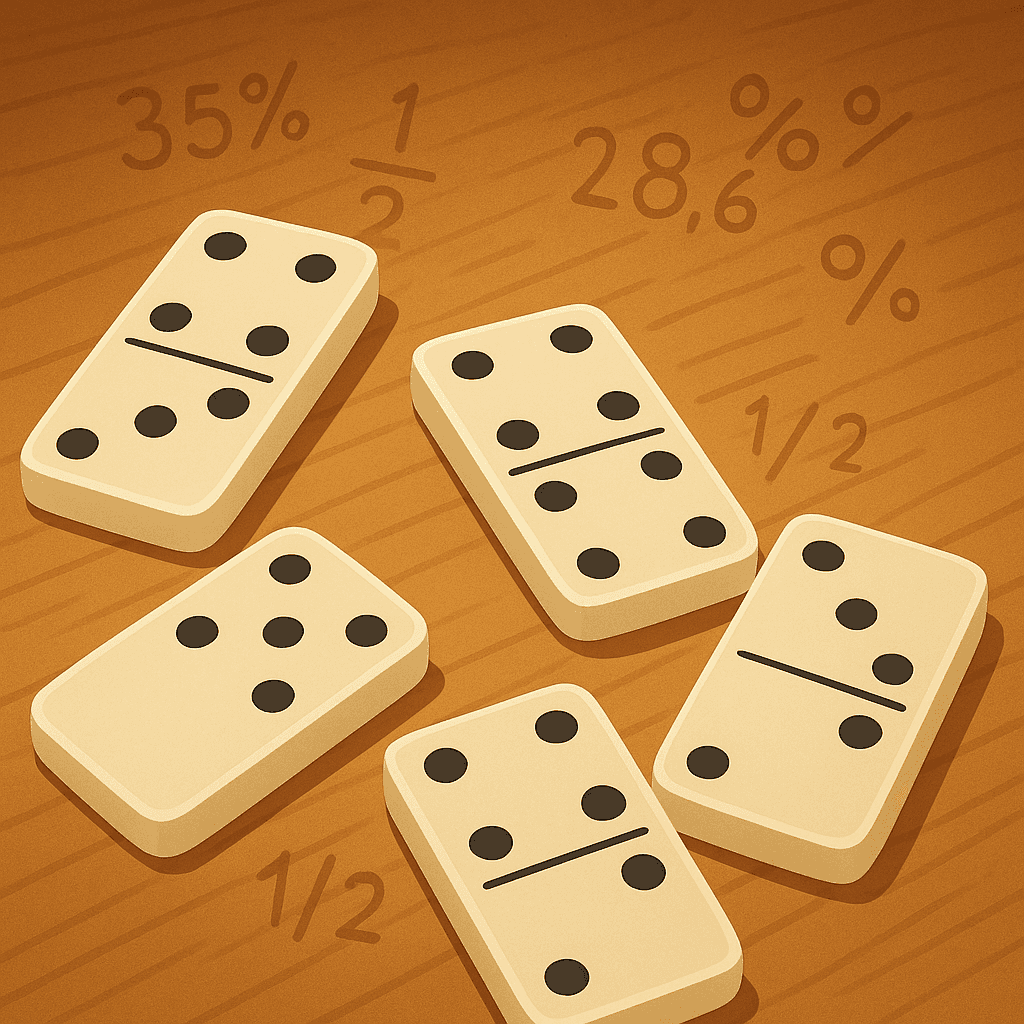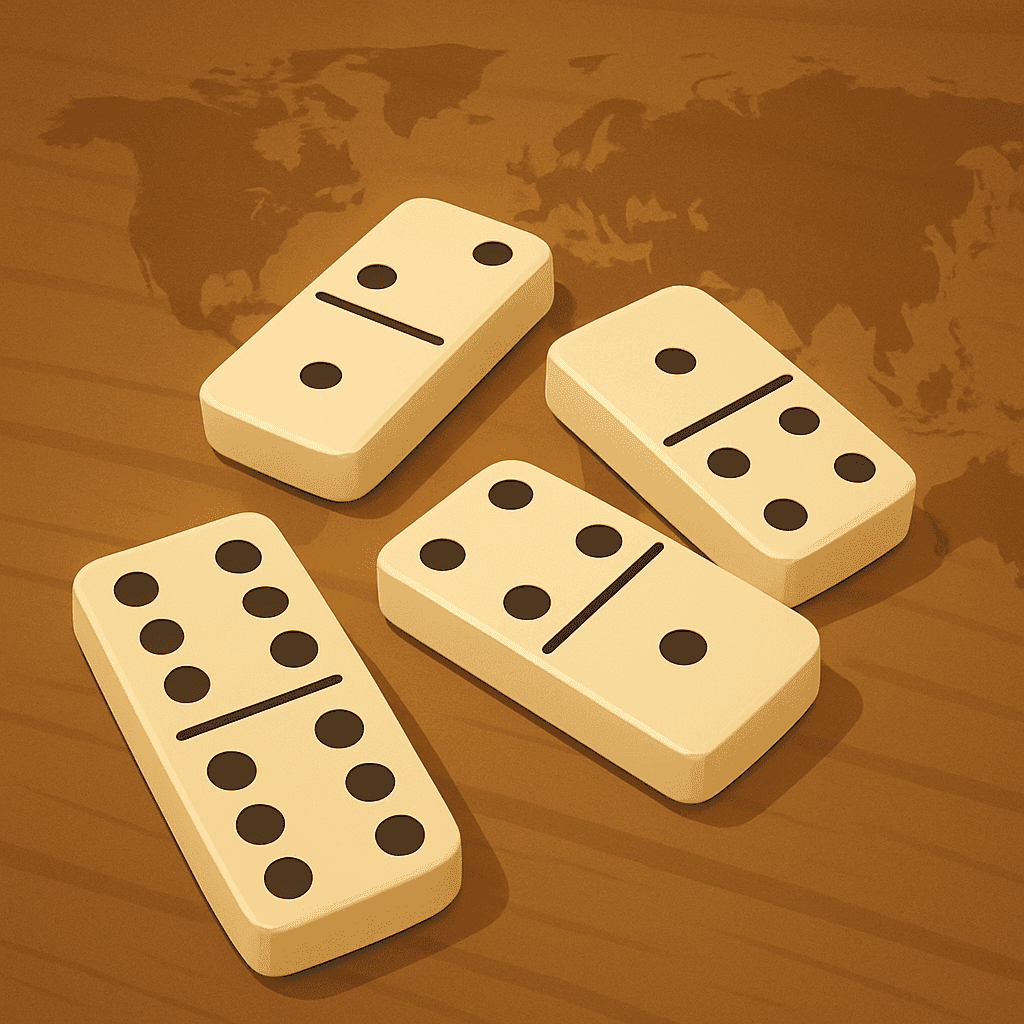
Domino Rules
Domino is a classic tile-based game enjoyed worldwide for its simplicity, strategy, and social appeal. Played with numbered tiles, the goal is to match ends and outplay opponents by being the first to play all your pieces or block the game.
This guide covers the domino rules, setup and gameplay, winning conditions, strategies, and popular variations so you can enjoy the game with confidence.
Created By Adam Davis Fernsby
How to Play Dominoes
Dominoes is a classic tile-based game with deep historical roots and a wide range of variations. The standard version, also called the Block Game, is straightforward: players take turns placing domino tiles edge to edge, trying to be the first to play all their pieces or force the game to a block.
Though the game can be played with two or more players, the rules for dominoes remain simple and strategic. Playiro.com goes deep into the rules of the game.
Preparations
- Players: 2 to 4 (rules adapt slightly for more players)
- Equipment: A standard double-six domino set (28 tiles total)
Tile setup:
- Place all tiles face-down on the table and shuffle them.
- Each player draws 7 tiles (for 2 players) or 5 tiles (for 3–4 players).
- Remaining tiles form the boneyard, where players draw during gameplay (depending on the version).
Gameplay
- The player with the highest double (e.g., double-6) goes first and places it in the center.
- Play proceeds clockwise.
- Each player must play a tile that matches one open end of the domino layout by number.
- If a player cannot make a legal move, they:
- Block Dominoes: pass their turn.
- Draw Dominoes: draw from the boneyard until they can play or the pile is empty.
Only the ends of the domino chain are playable. For example, if one end is a 3, the next tile must have a 3 on one side.
Doubles and Special Placement
- Doubles are placed perpendicularly to the line and typically count both ends as open for scoring (in some versions).
- In most standard versions, doubles do not grant extra turns or special abilities—they simply match like any other tile.
Winning the Game
The round ends when:
- One player has played all their tiles, or
- The game is blocked (no legal moves and the boneyard is empty).
Scoring:
- The winner of the round scores points equal to the total number of pips (dots) remaining in all opponents’ hands.
- In a blocked game, the player with the lowest total pip count wins and scores the difference between their total and each opponent’s.
Game End:
- The game continues in rounds until a player reaches a set target score (commonly 100 or 150).
- Alternatively, play can be for a fixed number of rounds.
Strategies and Tips
To defeat your opponents in Domino, try these simple strategies:
Track your opponent’s numbers
If an opponent skips a turn or draws, note which number they’re missing. Use this to your advantage by avoiding that number or forcing blocks.Hold your doubles carefully
Doubles can offer control, especially near the end of the game. Play them when they give you flexibility or limit your opponent’s moves.Play high pips early
Get rid of tiles with high numbers (like 6–6 or 5–6) early to reduce your point risk.Block intentionally
If you suspect your opponent is low on tiles, play to block their numbers and extend the game, forcing them to draw or pass.
Domino for Kids
Dominoes can be a fun, educational game for children—helping them learn numbers, recognize patterns, and exercise their brains.
For younger kids, you can:
- Play cooperatively and work together to match tiles.
- Use sets with colors, animals, or pictures instead of numbers.
- Create domino trains or towers for fun, no-pressure play.
Variants of Dominoes
If you want to, there are alternative versions of Domino to try, here are a few:
Mexican Train Domino Rules
A popular social variant that supports 2–8 players and uses a double-12 domino set (91 tiles).
The goal: be the first to play all your tiles and have the lowest score across multiple rounds.
Setup:
- Each player draws a set number of tiles (varies by player count).
- One central train hub is used, and the starting tile is the highest double (e.g., 12–12).
- Players place one tile to start their personal train, connected to the hub.
- Players may also start or play on the Mexican Train (a public line open to all).
Gameplay:
- On your turn, play a tile at the end of your train or the Mexican Train.
- If you can’t play, draw one tile. If still unable to play, mark your train as open with a marker (others can now play on it).
- Doubles must be satisfied immediately. If you play a double, you must play a second tile if possible. If not, draw and attempt again.
Winning:
- Round ends when a player plays all their tiles.
- Points are scored based on remaining pip values in other players’ hands.
- Game continues until a player reaches a pre-set score (commonly 100 or 150). Lowest score wins.
Optional Rules:
- Double Mexican Train (two public trains allowed)
- Double markers for open train status
Five-and-Three Domino Rules
Also called Fives and Threes, this is a scoring variant popular in UK pubs. It uses a double-six set, usually with 2–4 players.
Objective:
Score points during play by making the open ends of the layout add up to a multiple of 5 or 3.
Scoring Example:
- Ends total 15 → score 2 points (15 ÷ 5 = 3)
- Ends total 9 → score 3 points (9 ÷ 3 = 3)
Setup & Play:
- Each player draws a set of tiles and the highest double starts.
- Players add tiles matching numbers as normal but aim to score by placing tiles that make the open ends divisible by 3 or 5.
Tactical Considerations:
- Doubles count once unless placed on both ends.
- Blocks end the round; pip values don’t affect score unless in a cumulative format.
Winning:
- Games are played to a target score (commonly 61 or 121).
- Scoring is continuous throughout play, unlike in block-style dominoes.
Overview of the Game Rules
- Play starts with the highest double
- Players place matching tiles on open ends
- Draw or pass if no legal moves (depending on version)
- First to play all tiles or lowest pip count in a blocked game wins the round
- Winner scores opponents’ remaining pips
- Game ends when target score is reached or by fixed round


